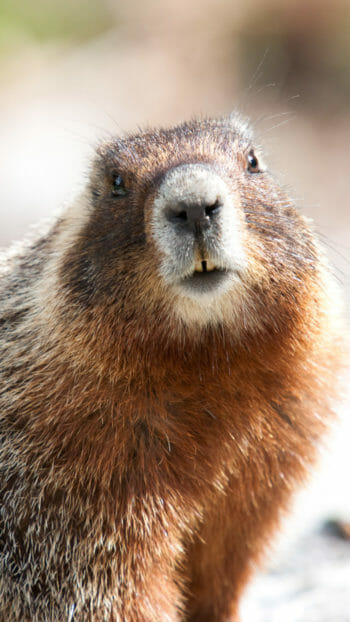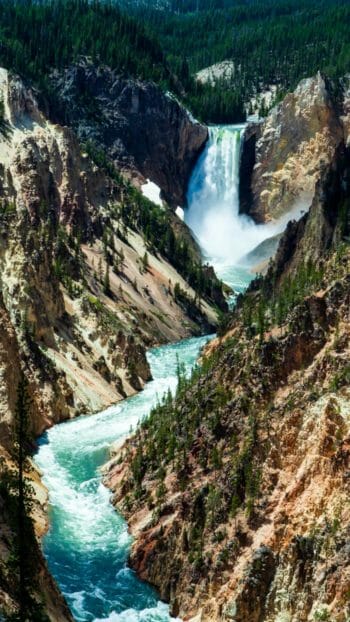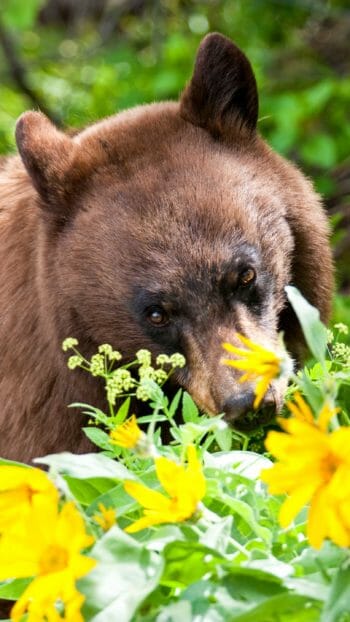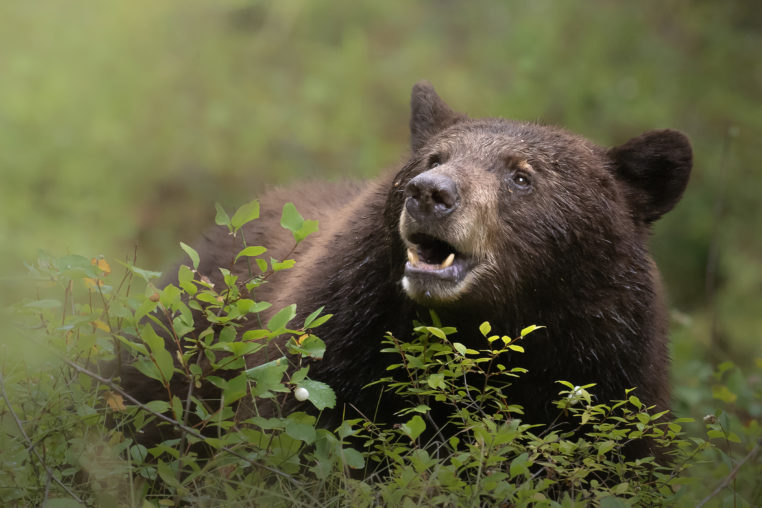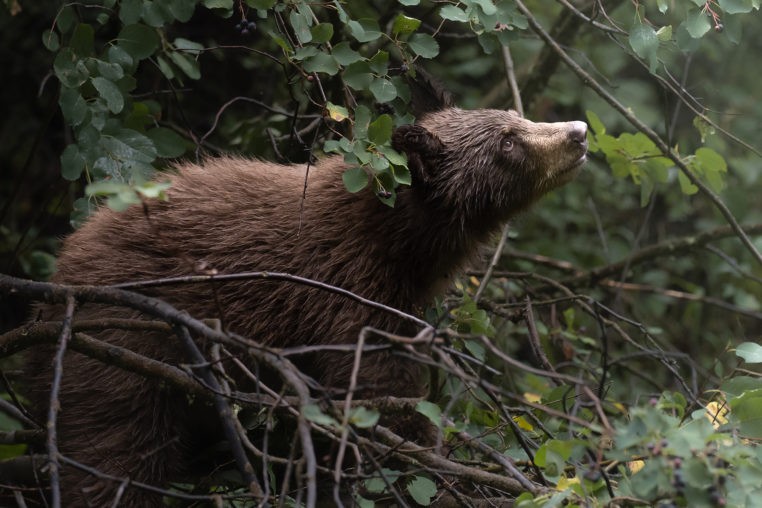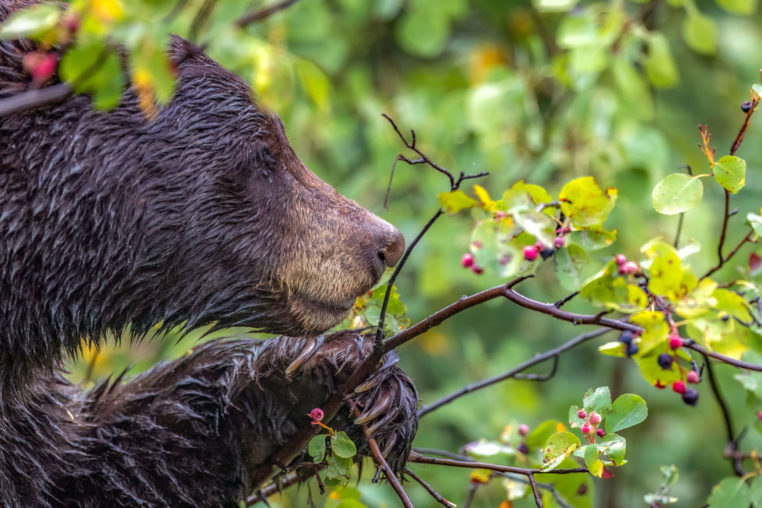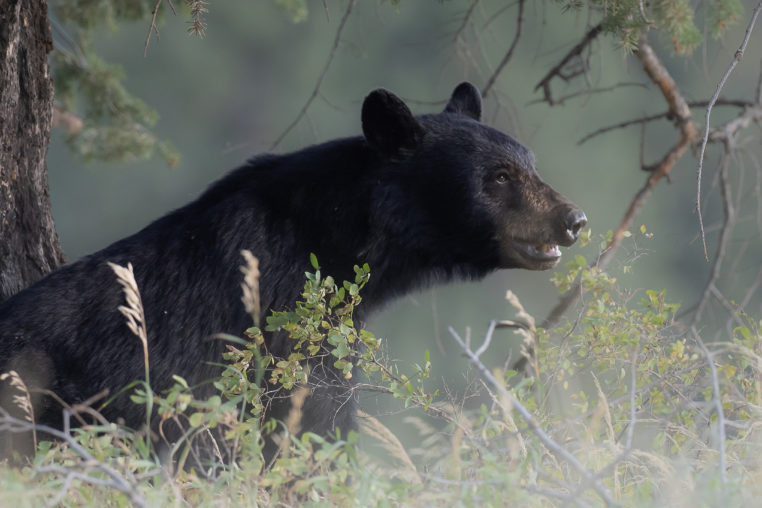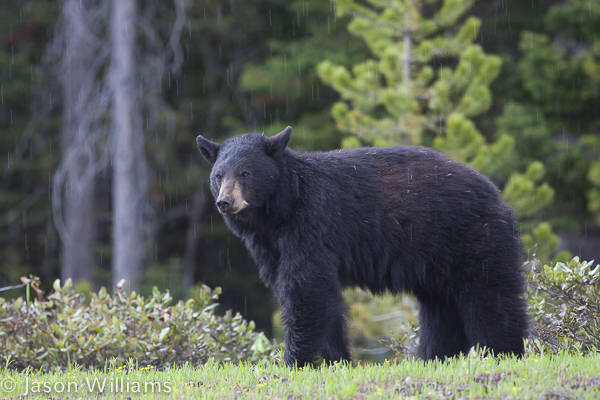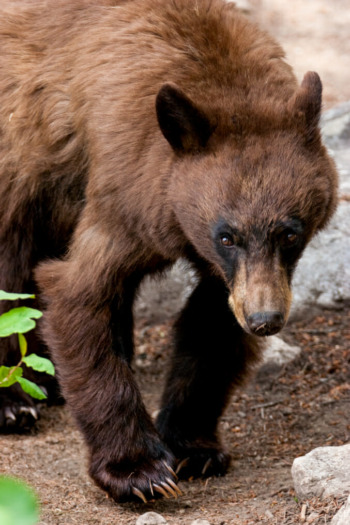
Ursus americanus
The American black bear is the most widespread and abundant bear species in North America, with over 600,000 individuals across the continent. In Yellowstone, black bears are smaller than their coastal relatives but still thrive in forests, meadows, and river corridors, where they play an important role in the ecosystem.
Wildlife Viewing
- Yellowstone
- Grand Teton
Book Online
Watch For Wildlife On These Tours
About
Size and Appearance
Black bears are generally smaller than grizzlies. In Yellowstone, females weigh 90–180 pounds, while males can reach 130–660 pounds. Despite their name, black bears are not always black—they can range in color from jet black to cinnamon, brown, or even blonde. Unlike grizzlies, black bears lack a muscular shoulder hump and have taller, more pointed ears.
Diet and Behavior
Black bears are true opportunistic omnivores. More than 80% of their diet is vegetation, including grasses, berries, roots, and nuts. They will also eat insects, fish, carrion, and occasionally young mammals. In fall, black bears enter hyperphagia, eating continuously to store fat for hibernation.
Because of their adaptability, black bears are more prone to conflicts with humans. They may raid trash cans, picnic sites, or campsites, which is why national parks strictly enforce food storage rules. The saying “A fed bear is a dead bear” reminds visitors that human food habituation often leads to bears being euthanized for safety reasons.
Hibernation and Cubs
In Yellowstone, black bears hibernate through the winter in dens hidden under logs, rocks, or snow. Sows give birth in January to tiny cubs weighing just 8 ounces. Cubs remain with their mothers for over a year, learning survival skills before venturing out on their own.
Distribution and Population
Unlike the grizzly, black bears are thriving. They are found from Canada to Mexico, in both wilderness areas and surprisingly close to human communities. Their adaptability makes them one of the most successful large mammals in North America.
How to Tell Them Apart from Grizzlies
Many visitors struggle to distinguish black bears from grizzlies, but here are the key identifiers:
- Shoulder Hump: Absent in black bears, present in grizzlies.
- Face Profile: Straight or slightly convex, unlike the concave profile of grizzlies.
- Ears: Taller and pointier than the smaller, rounded ears of grizzlies.
- Claws: Shorter and more curved than grizzly claws.
- Color: Can be black, brown, cinnamon, or blonde—so color alone is not reliable.
How to see black bears
Spring and fall are the best seasons to spot bears. In the spring, they emerge from hibernation at lower elevations, driven by hunger and the search for mates, which makes them easier to see against the lingering snow. During the fall, bears enter a phase called hyperphagia, spending nearly all their time foraging as they build fat reserves for winter. Look along treelines and open meadows for activity, but keep in mind that once winter sets in, bears retreat to their dens and are absent from the landscape.
FAQs
What types of bears live in the Greater Yellowstone Ecosystem?
The Greater Yellowstone Ecosystem is home to two species of bears—the grizzly bear (Ursus arctos horribilis) and the American black bear (Ursus americanus). While they share some similarities, each has unique physical traits, behaviors, and habitat preferences.
When is the best time to see bears in Yellowstone?
Spring and fall are the prime bear-viewing seasons in Yellowstone. In spring, bears emerge from hibernation hungry and more visible in lower elevations. In fall, they enter a feeding frenzy called hyperphagia, spending much of their time searching for food before winter.
How can you tell a grizzly bear from a black bear?
The easiest way to tell them apart is by their physical features, not their color. Grizzlies have a prominent shoulder hump, a concave facial profile, and shorter, rounded ears. Black bears lack the shoulder hump, have a straighter profile, and taller, more pointed ears.
What do bears in Yellowstone eat?
Bears are true omnivores, with over 80% of their diet made up of plants. They eat grasses, roots, berries, pine nuts, insects, fish, and occasionally larger prey. Their diet changes with the seasons, depending on what is most calorie-rich and available.
Why is it dangerous for bears to eat human food?
Once a bear learns to associate people with food, it will seek out human sources such as garbage, campsites, or picnic areas. This often leads to dangerous encounters, and unfortunately, food-conditioned bears are usually euthanized to protect public safety. This is why park rules prohibit feeding wildlife.
Do bears in Yellowstone hibernate all winter?
Most bears in Yellowstone hibernate during the winter months, retreating to dens from late fall to spring. However, they are not true obligate hibernators, meaning if conditions allow—such as mild weather and accessible food—some may remain active.
Further Reading
What Time of Year is Best to See Bears?
Mar 25, 2024
The GYE is home to both black bears and grizzly bears, making it a top destination for those seeking to experience bear sightings in the wild. There are many areas of prime bear habitat that allow for opportunities to encounter bears going about their natural behaviors.
Why Do Bears Hibernate?
Mar 4, 2024
Bears hibernate in the winter as an evolutionary adaptation to survive through months of extreme scarcity. However, they are not what we consider “obligate hibernators”.

